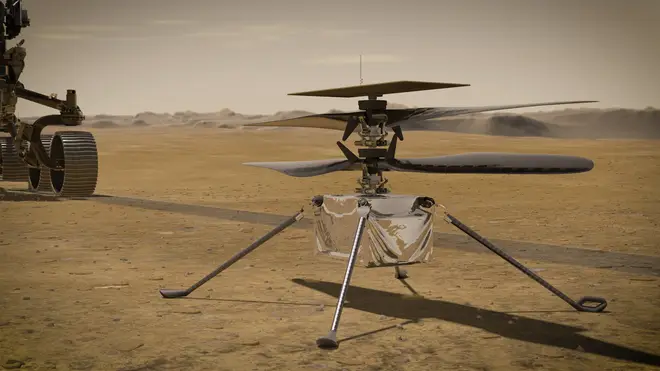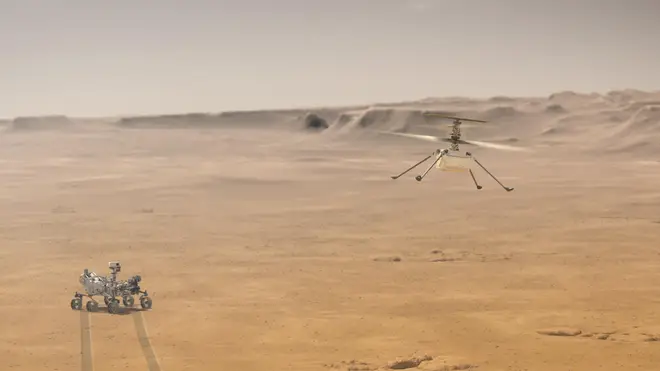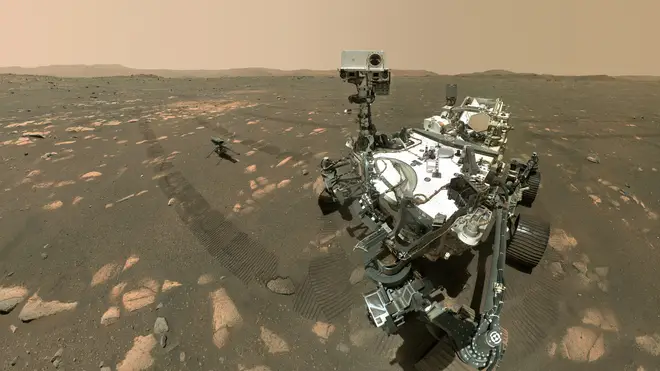
Clive Bull 1am - 4am
19 April 2021, 12:10 | Updated: 19 April 2021, 12:12

Nasa's Ingenuity Mars helicopter has made history after completing the first ever controlled flight on another planet, the US space agency has announced.
The helicopter took to the Martian skies on Monday morning (US time) as part of technology demonstration.
Data from the first flight will return to Earth a few hours after the autonomous test.
READ MORE: SpaceX wins bid to build lunar lander that will put the first woman on the moon
The original flight date of April 11 was postponed as engineers worked on pre-flight checks and a solution to a command sequence issue.
The Perseverance rover provided support during flight operations; taking images, collecting environmental data, and hosting the base station that enables the helicopter to communicate with mission controllers on Earth.

Ahead of the launch, MiMi Aung, Ingenuity Mars Helicopter project manager at Nasa's Jet Propulsion Laboratory (JPL), said: "Our team considers Monday's attempted first flight like a rocket launch.
"We're doing everything we can to make it a success, but we also know that we may have to scrub and try again.
"In engineering, there is always uncertainty, but this is what makes working on advanced technology so exciting and rewarding.
"We have to continually innovate and develop solutions to new challenges.
"And we get to try things others have only dreamed of."
Ingenuity arrived at the Jezero Crater on 18 February after an eight-month journey spanning nearly 300 million miles, tucked inside Perseverance rover.
After the spacecraft landed, it dropped the drone onto the ground so Ingenuity could prepare for its maiden flight.
Standing just 50cm tall, the helicopter weighs 1.8kg on Earth, but is a mere 0.68kg on Mars because of the red planet's lower gravity.
It is fitted with two rotors that spin in opposite directions to lift the drone off the ground.
As well as the lower gravity, the helicopter successfully faced the challenge of flying in the Martian atmosphere - around 100 times thinner than Earth's.
As it is a technology demonstration, the helicopter does not have any scientific instruments onboard.

One of Ingenuity's key objectives is to survive the "bone-chilling temperatures" of the red planet, with "nights as cold as minus 90C", Nasa says.
For its first flight, the helicopter took off from the ground and hovered in the air at around 10 feet (three metres) for around 20 to 30 seconds, before descending and touching back down on the Martian surface.
The helicopter will aim for up to five test flights within a 30 Martian-day (31 Earth-day) demonstration window.
It is designed to be mostly autonomous so Nasa will not be able to control the helicopter remotely due to the distance between Earth and Mars - it takes more than 11 minutes to get a radio signal back to Earth.
The space agency said it will not be able to look at engineering data or images from each flight until well after the flight takes place.